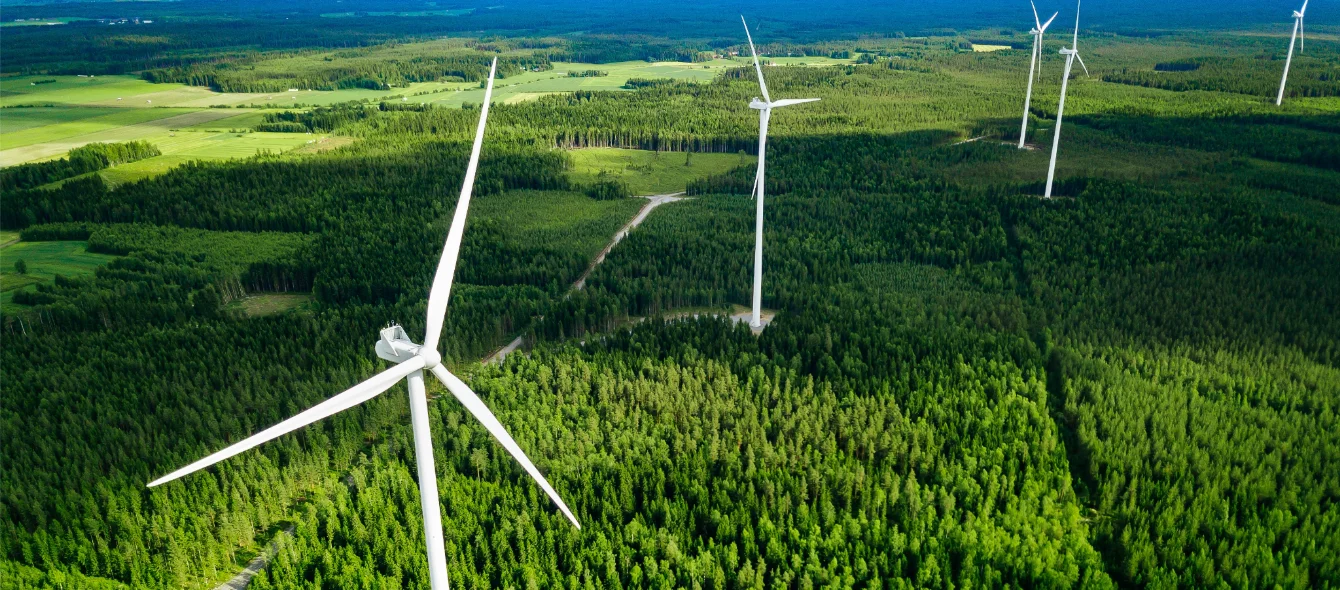The European Green Deal is the jewel in the EU’s climate crown, reinforcing its ambitions of becoming the first completely carbon-neutral supranational union by 2050. To meet this ambitious target, far-reaching changes will be necessary across all industries. The financial sector is no exception, what with its financing schemes for upcoming investments in the different sectors. EU member states will only be able to achieve net zero if companies invest more sustainably. In our newest en:former series, titled ‘Sustainable Finance’, we’ll be taking a closer look at the European Commission’s plans for the financial market, the opportunities for sustainable investments and the ‘green banking’ trend.
In November, the UK government announced that it would issue its first green bonds in 2021. The move is part of a growing trend. A total of 16 countries have issued green bonds so far, the most recent being Sweden and Germany.
In its World Energy Investment 2019 report, the International Energy Agency said energy sector investment needs to rise and a major capital reallocation was needed to meet sustainability goals. Green bonds are a way of raising funds and channeling them into sustainable investments.
What is a bond?
A bond is a loan, usually with a fixed interest rate and a date for when the principal sum of the loan must be repaid. They can be issued by different tiers of government, by multinational agencies, such as the World Bank or the European Investment Bank, or by companies. So how does a bond become green? A green bond is one in which the money raised is used for activities, either new or existing, with environmental benefits, but the range of what this might or should include is diverse and often contested.
Green bonds can also attract tax incentives on the income they generate, making them more attractive to investors. In addition, they allow investment funds to show investors that they are making sustainable investments.
Green Bond Principles
In 2014, the International Capital Market Association established the Green Bond Principles. These are voluntary guidelines based on four core components: use of proceeds, process for project evaluation and selection, management of proceeds and reporting. In effect, designated green projects should provide clear environmental benefits which can be assessed and where possible quantified.
Under the principles, green bonds should be used for one or more of five categories: climate change mitigation, climate change adaptation, natural resource conservation, biodiversity conservation, and pollution prevention and control. Another type of bond called Sustainability Bonds are used for projects which intentionally mix environmental and social objectives.
Market size
The green bond market has grown fast from its beginnings in 2013. According to the not-for-profit organization Climate Bond Initiative (CBI), around $265 billion in green bonds were issued in 2019 alone. Up to 2018, a total of around $580 billion in green bonds were issued.
In its state of the market report for the first half of 2020, the CBI found that, for the first time, Europe had accounted for more than 50% of all new green bonds issued globally. However, this year, green bond issuance has fallen, while the issuance of other forms of sustainable debt have risen – for example Sustainability, Social and Pandemic bonds – largely as a result of the Covid-19 pandemic.
Highlighting the differences between green bonds, the CBI breaks the total for 2020 up to early December down into three categories. $49.8 billion of the bonds were Certified Green Bonds, $169.6 billion were green bonds aligned with CBI definitions but not certified, while a substantial part of the market — $103.2 billion – were labelled green bonds not in alignment with CBI definitions and therefore not classified by the CBI as green bonds.
In the latter segment, bonds labelled green might, for example, be used for upgrading an old coal-fired coal plant to a more efficient one. While this reduces carbon emissions, the continued use of coal would not align with the CBI principles.
EU Green Bond Standard
The EU’s Budget and Recovery Fund anticipates significant funding from the issuance of green bonds in order to meet the investment requirements of the energy transition. In order to ensure that such bonds really are green it has been developing its own Green Bond Standard (GBS) as part of the European Green Deal Investment Plan. The UK government is also developing a classification system for green bonds.
The GBS is linked to the EU Taxonomy Regulation, which sets up a classification system for environmentally sustainable economic activities.
To be considered sustainable, an economic activity has to substantially contribute to one of the six environmental objectives laid out in the regulation, do no harm to any of the other objectives, be carried out in compliance with minimum safeguards and comply with technical screening criteria.
Photo credit: shutterstock.com, Ekaterina Kondratova
